Comfortable Bring

What should I include in my carry-on luggage for a long-haul flight ?
When packing your carry-on luggage for a long-haul flight, it's important to consider the items that will make your journey more comfortable and enjoyable. Here are some essential items to include: ### 1\. Personal Items - **Passport and travel documents**: Make sure to bring your passport, visa (if required), boarding pass, and any other necessary travel documents. - **Wallet and money**: Bring your wallet with cash, credit cards, and any currency you may need for your destination. - **Phone and charger**: Don't forget your phone and its charger, as well as any necessary adapters or converters for international use. - **Medication and health products**: If you have any medication or health products that you need during the flight, make sure to pack them in your carry-on luggage. - **Personal hygiene items**: Pack a small toiletry bag with items such as toothbrush, toothpaste, deodorant, hand sanitizer, and moisturizer. ### 2\. Comfort Items - **Snacks and drinks**: Bring some snacks and water to keep yourself hydrated and satisfied during the flight. - **Entertainment**: Pack a book, magazine, or e-reader to keep yourself entertained during the flight. You can also download movies or TV shows onto your device beforehand. - **Headphones or earbuds**: Bring headphones or earbuds to listen to music, watch movies, or block out noise during the flight. - **Travel pillow and blanket**: A travel pillow and blanket can help you get comfortable and restful during the flight. - **Eye mask and earplugs**: An eye mask and earplugs can help you block out light and noise, allowing you to sleep more easily during the flight. ### 3\. Clothing and Accessories - **Comfortable clothing**: Wear comfortable clothing on the flight, such as stretchy pants or leggings, a loose-fitting shirt, and comfortable shoes. - **Sweater or jacket**: Bring a sweater or jacket to keep yourself warm during the flight, especially if you tend to get cold easily. - **Socks and slippers**: Pack a pair of socks and slippers to keep your feet warm and comfortable during the flight. - **Sunglasses and hat**: Bring sunglasses and a hat to protect yourself from the sun when you arrive at your destination. ### 4\. Miscellaneous Items - **Reusable water bottle**: Bring an empty reusable water bottle to fill up after passing through security, rather than buying bottled water at the airport. - **Pen and paper**: Bring a pen and paper to jot down notes or ideas during the flight. - **Travel journal**: If you enjoy writing, consider bringing a travel journal to document your experiences during the trip. - **Small backpack or purse**: Use a small backpack or purse to store all of your carry-on items, making it easy to access them during the flight.
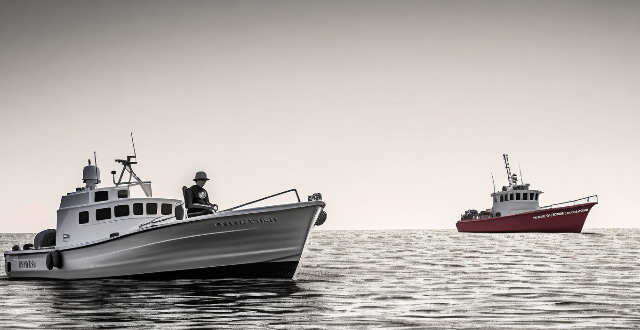
Can I bring my pet on a cruise ship ?
Cruise ships offer a unique and exciting way to travel, but many pet owners wonder if they can bring their furry friends along for the adventure. The answer to this question depends on several factors, including the cruise line, the type of pet, and the specific policies of the ship. In this article, we will explore these factors in detail and provide you with all the information you need to know before deciding whether to bring your pet on a cruise ship.

What should I pack for a tropical island vacation ?
When packing for a tropical island vacation, it's important to bring essentials such as sunscreen, insect repellent, swimsuits, and comfortable clothing. You may also want to consider bringing optional items like evening attire, reading material, and snorkeling gear. Check the weather forecast before your trip and adjust your packing list accordingly. Don't forget your sense of adventure and relaxation!

Is it possible for sports to transcend political differences and bring nations together ?
The article discusses the potential of sports to transcend political differences and bring nations together. It highlights three key ways in which sports can achieve this: through competition, cultural exchange, and diplomacy. The power of sports is demonstrated through various examples, such as the Olympics, World Cup, NBA, Formula One, Ping-Pong Diplomacy, and Peace Games. The article concludes that while political conflicts may still exist outside of sports, these activities provide a platform for positive interactions and collaboration that can lead to lasting change.

What should I pack for a photography trip to a tropical destination ?
When planning a photography trip to a tropical destination, it's essential to pack the right gear and clothing to ensure you capture stunning images while staying comfortable and protected from the elements. Here are some items you should consider packing: Camera Gear: Primary camera body, backup camera body, variety of lenses, sturdy tripod, filters, high-capacity memory cards, extra batteries and charger, cleaning kit. Clothing and Accessories: Lightweight clothing made from natural fabrics like cotton or linen, waterproof jacket or raincoat, hat and sunglasses, sunscreen, insect repellent, comfortable shoes suitable for walking on uneven terrain or hiking trails, swimwear if you plan to swim or snorkel. Miscellaneous Items: Comfortable backpack or camera bag with enough space to carry all your gear and personal belongings, reusable water bottle filled with clean drinking water, snacks like energy bars, nuts or fruits to keep your energy levels up during long shoots or hikes, small first aid kit with essential items like bandages, antiseptic wipes, pain relievers and any prescription medications you may need, guidebooks or maps of the area you'll be exploring to help you navigate and find interesting locations to photograph.
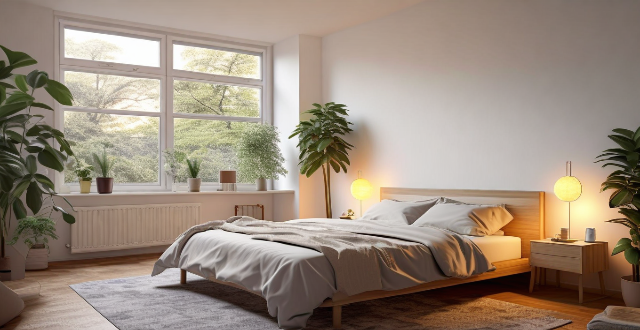
How can I create a sleep-friendly environment in my bedroom ?
To create a sleep-friendly environment in your bedroom, control the lighting, maintain a comfortable temperature, reduce noise levels, invest in a comfortable mattress and pillows, limit electronic devices, and establish a bedtime routine.

How do I prepare for a successful sample sale shopping experience ?
Sample sales can be a great opportunity to score designer goods at a fraction of the retail price. However, they can also be overwhelming and chaotic if you're not prepared. Here's how to get ready for a successful sample sale shopping experience: ## Research Beforehand - **Know the Brands**: Make a list of the brands that will be featured in the sale and familiarize yourself with their styles and price points. - **Understand the Sale Structure**: Find out if there are any restrictions on the number of items you can buy and check if the sale accepts credit cards or is cash only. ## Plan Your Attack - **Set a Budget**: Decide how much you're willing to spend before you go and stick to your budget to avoid overspending. - **Make a Wish List**: Prioritize the items you want most and keep this list in mind as you navigate the sale. ## Dress Appropriately - **Wear Comfortable Clothing**: Choose clothing that allows you to move freely and try things on quickly. Layer your outfit for easy changing in crowded fitting rooms. - **Opt for a Small Bag**: A small crossbody bag keeps your hands free and reduces clutter. Only bring essentials like your wallet, phone, and a list if needed. ## Arrive Early - **Beat the Crowds**: Get there when the doors open to have the best selection. This also gives you time to scope out the layout of the sale. - **Be Prepared to Wait**: Bring a book or download an audiobook to pass the time. Snacks and water can also help during long waits. ## Be Strategic - **Have a Game Plan**: Head straight for the items on your wish list first and work efficiently through the sections of the sale. - **Keep Your Cool**: Don't get caught up in the frenzy; remember, it's just shopping. Take breaks if you need to clear your head. ## Try Everything On - **Fitting Room Efficiency**: Try on items as you go to avoid a pileup later. Don't waste time waiting in long lines if it's not necessary. - **Check for Flaws**: Inspect each item carefully for any damages or flaws. Remember, these are samples, so some wear and tear might be expected. ## Final Tips - **Be Open to Surprises**: You might find unexpected gems not on your list. Stay open-minded but stick to your budget. - **Don't Forget the Basics**: Bring a pen to jot down notes or swap contact info with fellow shoppers. A tape measure can help ensure online purchases fit when trying things on.

What kind of expertise do celebrities bring to their roles as entrepreneurs ?
Celebrities often leverage their fame and influence to venture into entrepreneurship. The expertise they bring to their roles as entrepreneurs can vary, but some common areas include name recognition, influence and social media presence, networking opportunities, creative vision, financial resources, public speaking and charisma, negotiation skills, perseverance and resilience, and personal brand alignment. These factors can contribute to the success of their ventures and set them apart from other entrepreneurs.

What is the optimal environment for studying effectively at home ?
The provided text offers a comprehensive guide on creating an optimal study environment at home. It emphasizes the importance of choosing a quiet area with comfortable seating and adequate lighting. The text suggests keeping the study area clean, clutter-free, and properly organized with essential materials within reach. It also recommends minimizing distractions by controlling electronics, using do not disturb signs, and scheduling short breaks. Personalizing the space with motivational decor, personal touches, and maintaining a comfortable temperature is also advised. Overall, the text aims to help readers create a conducive study environment that enhances focus and productivity.

How can I maintain a professional appearance while staying comfortable throughout the day ?
Maintaining a professional appearance while staying comfortable throughout the day is crucial in the workplace. Here are some tips: 1. Dress appropriately by choosing well-fitted clothes that are appropriate for your job and industry, avoiding overly casual or revealing clothing, and sticking to neutral colors like black, gray, navy, or beige. Pay attention to grooming by keeping your hair neat and tidy, making sure your facial hair is well-groomed if you choose to wear it, and applying deodorant and keeping your breath fresh with mints or gum. 2. Invest in quality footwear by wearing comfortable shoes that are supportive, such as loafers or low heels, avoiding high heels or shoes that pinch your toes, and breaking in new shoes gradually by wearing them around the house before wearing them to work. Take care of your feet by wearing socks or stockings that wick away moisture and prevent blisters, using shoe inserts or insoles for extra cushioning and support, and giving your feet a break by taking off your shoes during lunch breaks or when you're at your desk. 3. Stay hydrated and nourished by drinking plenty of water and bringing a water bottle to work to refill it throughout the day, avoiding sugary drinks and caffeine which can dehydrate you. Snack smartly by packing healthy snacks like fruits, nuts, or granola bars to avoid midday cravings for unhealthy foods, and eating small meals throughout the day instead of three large ones to maintain energy levels. 4. Take breaks and stretch by getting up from your desk every hour or so and taking a short walk or stretch, using your lunch break to go for a walk outside or do some light exercise. Practice good posture by sitting up straight with your feet flat on the floor and your shoulders relaxed, using a chair with good back support and adjusting the height if necessary, and taking breaks from staring at a computer screen by looking away for a few seconds every 20 minutes.

What equipment do I need to bring to a tennis training camp ?
Attending a tennis training camp requires essential tennis gear, protective accessories, and personal items. Pack primary and spare racquets, practice and new balls, athletic clothing, tennis shoes, sun protection, and water bottles. Consider ankle braces, knee supports, and elbow bands for injury prevention. Don't forget casual clothes, toiletries, a backpack, reading material, and devices with chargers for off-court activities. Check with the camp organizers for specific requirements to ensure a complete packing list.

Are there any specific toiletries I need to bring for a camping adventure ?
When embarking on a camping adventure, it's important to pack the essential toiletries to ensure you stay clean and comfortable throughout your trip. Here are some specific items you should consider bringing: - Personal Hygiene Items such as toothbrush and toothpaste, soap or body wash, shampoo and conditioner, deodorant, razor and shaving cream, tissues or toilet paper, hand sanitizer, sunscreen, insect repellent, lip balm with SPF, and feminine hygiene products. - Hair Care Items like comb or brush, hair ties or clips, dry shampoo, hairbands or headscarves. - Oral Care Items including dental floss, mouthwash, tongue scraper, toothpicks. - Foot Care Items such as nail clippers or scissors, moleskin or bandages, foot powder, shoe deodorizers. - Miscellaneous Items like earplugs, eye mask, small mirror, travel pillow, wet wipes, first aid kit, laundry soap or detergent tablets, sewing kit, baby powder or cornstarch, extra plastic bags or compression sacks. Remember to pack these items in waterproof bags to protect them from moisture, and consider investing in reusable containers to reduce waste. With this comprehensive list, you'll be well-prepared for your next camping adventure!
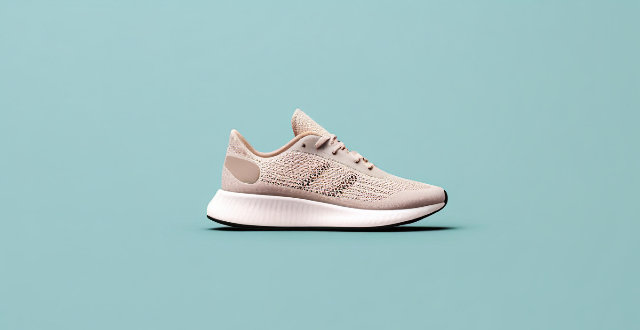
Can you recommend some stylish and comfortable running shoes ?
The text provides a topic summary for recommendations on stylish and comfortable running shoes. It lists five models: Nike Zoom Pegasus 36, Adidas Ultraboost 19, Brooks Ghost 12, Mizuno Wave Rider 22, and Hoka One One Clifton 7. Each model is described in terms of its design and comfort features. The Nike shoe has a modern design with responsive cushioning; the Adidas model offers a trendy look and soft ride; the Brooks shoe has an understated style with excellent cushioning; the Mizuno shoe has a unique wave plate design with balanced cushioning and support; and the Hoka One One shoe boasts minimalist design with maximal cushioning. Overall, these recommended running shoes cater to runners who prioritize both style and comfort.

What is the ideal backpack for a city break ?
When planning a city break, it's important to choose the right backpack that can accommodate all your essentials while being comfortable and stylish. Key features of an ideal backpack for a city break include compact size with sufficient capacity, padded straps and back support for comfort, multiple compartments for organization, water-resistant material and sturdy zippers for durability, and stylish design with customizable features for personalization. Recommended backpacks for a city break include Herschel Classic Backpack, Osprey Nebula Laptop Backpack, JanSport SuperBreak Backpack, and The North Face Borealis Backpack. By selecting a backpack that meets these criteria, you can ensure a comfortable and enjoyable experience while exploring new cities.

What should I pack for an adventure travel activity ?
Adventure travel activities can be thrilling and exciting, but it's important to pack the right gear to ensure your safety and comfort. Here are some essential items to consider packing for your next adventure: - Clothing: A waterproof jacket with a high waterproof rating and breathability is essential for outdoor activities in wet conditions. Quick-dry shirts and pants that are comfortable to move in and suitable for the climate you'll be traveling in are ideal. Comfortable shoes or boots that provide support, traction, and comfort are also important. Pack warm layers like a fleece jacket or sweater for cooler temperatures. - Gear: Choose a backpack that's comfortable to wear and has enough space for all your gear. A headlamp or flashlight is essential for navigating in the dark or during power outages. Pack extra batteries or a charger to ensure you have enough light throughout your trip. A well-stocked first aid kit with bandages, antiseptic wipes, pain relievers, and any prescription medications you may need is important. A multi-tool can come in handy for various tasks. - Other Essentials: A reusable water bottle and a water filter or purification tablets are crucial for staying hydrated. High-energy snacks and food that are easy to carry and won't spoil quickly are great options for fueling up during your adventure. Reliable navigation tools like a map, compass, or GPS device are essential for finding your way in unfamiliar terrain. By packing these essential items, you'll be prepared for whatever challenges come your way during your adventure travel activity. Remember to also check the weather forecast and any specific requirements for your destination to ensure you have everything you need for a safe and enjoyable trip.

What are the must-have travel packing accessories for a comfortable trip ?
When planning for a trip, packing the right accessories is crucial to ensure comfort and convenience. Essential items include packing cubes, travel pillows, earplugs, portable chargers, water bottles, sunscreen, rain gear, versatile clothing, first aid kits, and compression bags. Each item serves a specific purpose, such as organization, neck support, noise reduction, device charging, hydration, sun protection, rain preparedness, space-saving in luggage, health care, and efficient use of suitcase space. Selecting these accessories based on individual trip needs can greatly enhance the traveling experience.

What are the essential items to pack for a backpacking trip across Europe ?
When backpacking across Europe, it's crucial to pack essential items that cater to your needs during the journey. These include versatile and lightweight clothing, comfortable shoes, warm layers, basic toiletries, sun protection, a first aid kit, a well-fitted backpack, a sleeping bag, a headlamp or flashlight, power bank and chargers, a travel adapter, a camera, travel documents and money, a reusable water bottle, a daypack, a travel journal and pen, and a lock. Packing light is key for an enjoyable trip.

What kind of clothing should I pack for a trip to Africa ?
When packing for a trip to Africa, it's important to consider the climate and culture of the region you'll be visiting. Here are some essential clothing items to pack: - Lightweight and breathable fabrics such as cotton, linen, and rayon. - Long sleeve shirts and pants to protect your skin from the sun and insects. - A wide-brimmed hat to shade your face and neck. - Comfortable walking shoes or sandals with good support. - A light jacket or sweater for cooler evenings. - Sunglasses and sunscreen with high SPF protection. - Insect repellent to keep mosquitoes and other bugs at bay. It's also important to dress respectfully when traveling in Africa. Many African countries have conservative dress codes, especially in rural areas. Here are some tips to keep in mind: * Avoid wearing revealing or tight-fitting clothing. * Cover your shoulders and knees when visiting religious sites or conservative communities. * Women may want to bring a scarf or pashmina to cover their hair in certain situations. * Avoid wearing excessive amounts of jewelry or expensive accessories, as this can attract unwanted attention. The climate in Africa varies widely depending on the region and season. Here are some general guidelines for different seasons: Dry Season (November to April): * Lightweight clothing made of natural fibers like cotton and linen. * Shorts, skirts, and t-shirts for hot weather. * A light jacket or sweater for cooler evenings. * Sunglasses and sunscreen with high SPF protection. Wet Season (May to October): * Waterproof jacket or raincoat. * Quick-drying clothes that can be easily washed and dried. * Warm layers for cooler temperatures, especially in the evenings. * Insect repellent to keep mosquitoes and other bugs at bay. Year-Round Tips: * Pack clothing in neutral colors that can be mixed and matched easily. * Bring comfortable walking shoes or sandals with good support. * Don't forget a swimsuit if you plan on going to the beach or taking part in water activities. * Pack a small first aid kit with basic supplies like bandages, antiseptic wipes, and pain relievers.

What should I pack for a cultural exploration journey ?
When embarking on a cultural exploration journey, itWhen embarking on a cultural exploration journey, it that will enhance your experience and it is important to pack items that will enhance your experience and ensure your comfort throughout the trip. Essential items include comfortable walking shoes, lightweight clothing, culturally appropriate attire, camera, portable charger, travel adapter, sunscreen, insect repellent, basic toiletries, reusable water bottle, daypack, and travel journal. Research the specific needs and customs of the culture you will be visiting to tailor your packing list accordingly.

What are the best strategies for packing for a quick weekend city escape ?
When planning a quick weekend city escape, it's important to pack efficiently and strategically. Here are some tips on how to do just that: 1. Plan Your Outfits in Advance: Consider the weather, activities, and events you have planned during your trip. Try to choose versatile pieces that can be mixed and matched to create different looks. Example outfit combinations include jeans, white t-shirt, leather jacket, comfortable shoes; dress, cardigan, flats, statement necklace; and leggings, tunic top, boots, scarf. By planning your outfits in advance, you'll be able to pack only what you need without having to worry about running out of clothes or bringing too much. 2. Stick to a Color Palette: Choose a few colors that work well together and stick to them throughout your wardrobe. This will allow you to mix and match pieces more easily and reduce the number of items you need to bring. Example color palette includes neutrals (black, white, gray) and pops of color (red, blue, green). By sticking to a color palette, you'll be able to pack less while still creating stylish outfits for your weekend getaway. 3. Pack Lightweight Layers: Bring layers so you can easily adjust your outfit as needed without having to carry around bulky coats or sweaters. Example layers include lightweight cardigan or denim jacket; scarf or pashmina; thin turtleneck or long-sleeved tee. By packing lightweight layers, you'll be prepared for any weather while still keeping your luggage light and manageable. 4. Don't Forget the Essentials: Make sure to include items such as underwear, socks, toiletries, medications, and any necessary travel documents. These items may take up space but are essential for a comfortable and stress-free trip. Example essentials include underwear and socks (enough for each day plus one extra); toiletries (toothbrush, toothpaste, shampoo, conditioner, body wash); medications (prescriptions and over-the-counter remedies); travel documents (passport, ID, boarding pass). By including these essentials in your packing list, you'll be prepared for any situation that may arise during your weekend getaway.

What are the essential items to pack for a backpacking trip ?
Essential Items to Pack for a Backpacking Trip: Shelter and Sleeping Gear, Clothing, Food and Water, Cooking and Eating Utensils, First Aid Kit and Safety Items, Navigation Tools, and Miscellaneous Items.

What are some tips for traveling with toddlers ?
Traveling with toddlers can be a rewarding experience if you prepare well. Pack essential and convenience items, plan ahead for flights and accommodations, stay flexible during the trip, and prioritize safety measures. By following these tips, you can make your journey more enjoyable for both you and your little one.

How do circular economy principles apply to supply chain management, and what benefits do they bring in terms of climate change adaptation ?
The circular economy is a regenerative system that replaces the "end-of-life" concept with reducing, alternatively reusing, sharing, repairing, refurbishing, remanufacturing and recycling existing materials and products. This approach minimizes waste and pollution, extends product lifecycles, and helps to mitigate climate change. In supply chain management, applying circular economy principles can bring significant benefits in terms of climate change adaptation. The key principles of circular economy in supply chain management include design for recycling and reuse, extended producer responsibility (EPR), circular procurement, collaborative partnerships, resource efficiency, digital tracking and transparency, reduction in greenhouse gas emissions, conservation of natural resources, increased resilience, innovation and economic opportunities, and improved waste management. By adopting these practices, organizations can contribute to a more sustainable economy that reduces environmental impacts and builds resilience against the effects of a changing climate.
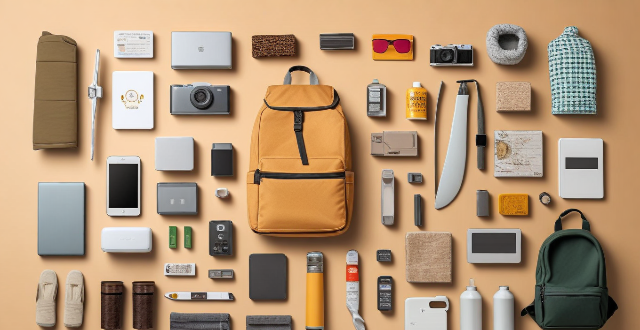
What should I pack for a week-long cruise trip ?
This guide provides a comprehensive list of essentials to bring on a week-long cruise trip, including personal care items, clothing and accessories, electronics and entertainment, miscellaneous items, and tips for efficient packing. It suggests packing travel-sized toiletries, necessary medications, comfortable casual wear, dressy attire for formal nights, swimwear, cover-ups, evening wear, suitable footwear, a camera or smartphone for capturing memories, chargers for electronic devices, books or an e-reader for relaxation, useful travel apps, sun protection items like sunglasses and hats, luggage locks for security, a daypack for shore excursions, a water bottle to stay hydrated, and important documents such as passports and IDs. The guide also includes tips for efficient packing like rolling clothes instead of folding them, using packing cubes or compression bags to keep items organized and separate, limiting shoes to versatile footwear that can be worn with multiple outfits, checking the weather forecast and packing accordingly, and considering laundry options either onboard or by washing items in the sink to reuse.

What are the best travel packing tips for a long trip ?
Packing for a long trip can be challenging, but with these tips, you'll be able to pack efficiently and strategically. Plan your outfits, pack lightweight clothing, choose versatile shoes, pack smart accessories, bring multipurpose toiletries, use packing cubes or compression sacks, and leave room for souvenirs. By following these tips, you'll have everything you need for your journey without overpacking or sacrificing style.

What are the essential items to bring for a scuba diving or snorkeling trip ?
When planning a scuba diving or snorkeling trip, it's important to be prepared with the right gear and equipment. Here are some essential items to consider bringing: ## Scuba Diving ### Personal Gear - **Wetsuit or Drysuit**: Depending on the water temperature, you may need a wetsuit or drysuit to keep warm. - **Fins, Mask, and Regulator**: These are the basic pieces of scuba equipment that you'll need for each dive. - **Dive Computer**: A dive computer helps you track your depth, time, and nitrogen levels. - **Buoyancy Control Device (BCD)**: A BCD helps you adjust your buoyancy underwater. - **Dive Watch**: A watch with a timer function can help you keep track of your dive time. - **Dive Light**: A dive light is useful for exploring underwater caves or for night dives. - **Dive Knife**: A dive knife can be used for safety purposes or to cut through fishing line or nets. - **Dive Boots**: Dive boots protect your feet from sharp rocks and coral. - **Dive Gloves**: Dive gloves protect your hands from cold temperatures and abrasions. ### Safety Equipment - **First Aid Kit**: A first aid kit should include items such as bandages, antiseptic wipes, and pain relievers. - **Signal Whistle**: A signal whistle can be used to attract attention if you need assistance. - **Surface Marker Buoy (SMB)**: An SMB can be deployed to mark your position on the surface while you're underwater. - **Dive Flag**: A dive flag alerts boaters and other water users that there are divers in the area. - **Oxygen Boost**: An oxygen boost can be used in case of decompression sickness. ## Snorkeling ### Personal Gear - **Snorkeling Mask**: A well-fitting mask is essential for clear vision underwater. - **Snorkeling Fins**: Fins help you move more efficiently through the water. - **Snorkeling Vest**: A snorkeling vest provides added buoyancy and comfort while swimming. - **Sun Protection**: Sunscreen, sunglasses, and a hat are important for protecting your skin and eyes from the sun's harmful rays. - **Waterproof Camera**: A waterproof camera allows you to capture memories of your underwater adventures. - **Rash Guard**: A rash guard provides an extra layer of protection against the sun and abrasions. - **Dry Bag**: A dry bag can be used to store your belongings while you're in the water. ### Safety Equipment - **Life Jacket**: A life jacket is important for staying afloat if you become tired or encounter rough waters. - **Whistle**: A whistle can be used to attract attention if you need assistance. - **Water Shoes**: Water shoes provide protection for your feet while walking on rocky or slippery surfaces. - **Floatation Device**: A floatation device such as a pool noodle or kickboard can be used for added stability and support while swimming.
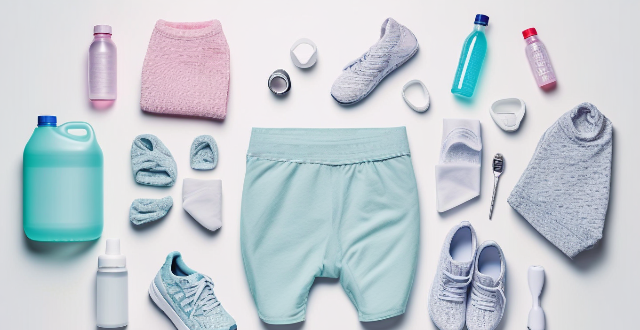
What kind of equipment do I need for aerobic exercise ?
To get started with aerobic exercise, you will need comfortable clothing, supportive shoes, a heart rate monitor (optional), water bottle, and a towel (optional).

Are there any specific exercises for dealing with test anxiety ?
Managing Test Anxiety: Strategies for Success Test anxiety is a common issue faced by many students, especially during exams. It can have a negative impact on performance and overall well-being. However, there are specific exercises that can help in dealing with test anxiety. In this article, we will discuss some effective strategies for managing test anxiety. Mindfulness meditation is a powerful tool for reducing stress and anxiety. By focusing on the present moment and observing thoughts without judgment, you can learn to calm your mind and reduce feelings of anxiety. Deep breathing exercises can help to slow down your heart rate and relax your muscles, reducing feelings of anxiety. Visualization techniques involve imagining yourself successfully completing a task or achieving a goal. This can help to build confidence and reduce anxiety. Cognitive restructuring involves identifying and challenging negative thoughts that contribute to anxiety. By replacing these thoughts with more realistic and positive ones, you can reduce feelings of anxiety. In conclusion, test anxiety is a common issue faced by many students, but there are specific exercises that can help in dealing with it. Mindfulness meditation, deep breathing exercises, visualization techniques, and cognitive restructuring are all effective strategies for managing test anxiety. By practicing these exercises regularly, you can reduce feelings of anxiety and improve your performance on exams.